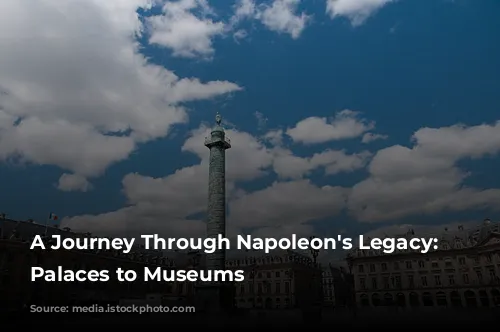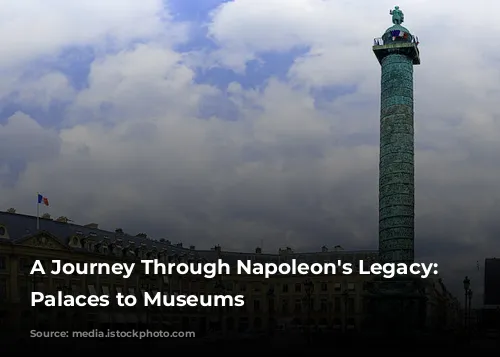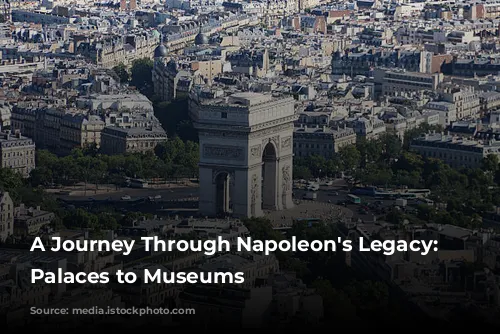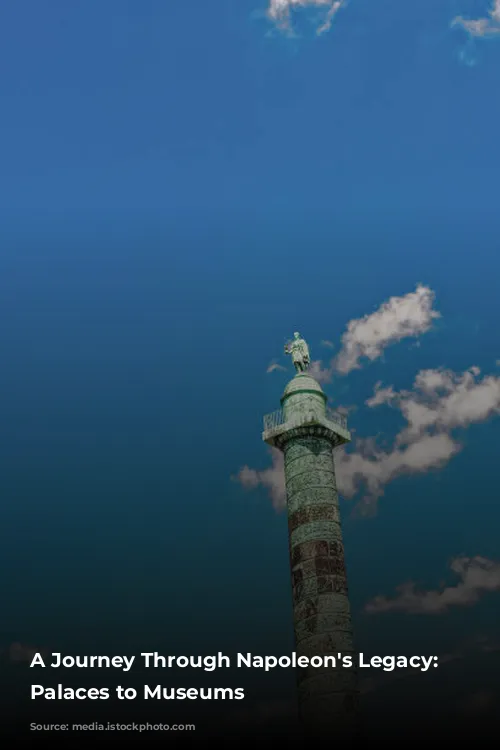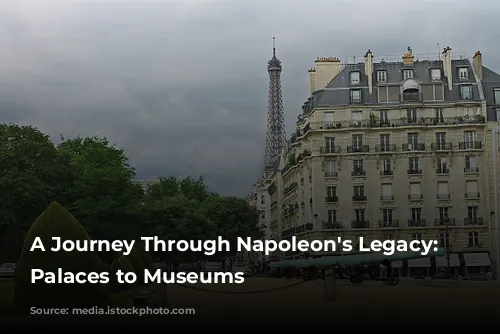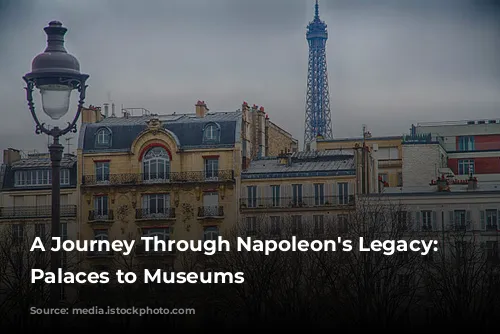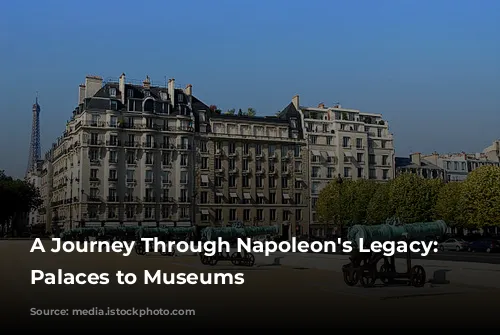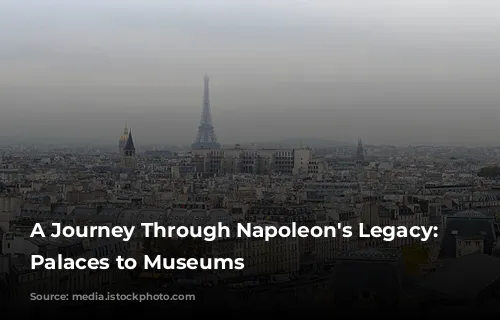Napoleon Bonaparte, a name synonymous with power, conquest, and enduring legacy. While his military exploits dominated Europe, his life was intertwined with captivating residences, art, and the enduring symbol of his ambition, the Legion d’Honneur.

From Humble Beginnings to Imperial Splendor: Napoleon’s Residences
Imagine a world where the grandeur of palaces and the intimacy of private residences intertwine to paint a portrait of a remarkable life. The Château de Malmaison, nestled just outside of Paris, was more than just a grand residence. This sublime estate, accessible via the RER A from Châtelet – Les Halles, became the beloved home of Napoleon and his first wife, Josephine. Decorated by the renowned architects Percier and Fontaine, the chateau reflects the elegance and taste of this extraordinary couple. Visitors can still explore the private apartments and get a glimpse into Josephine’s life, who resided here until her death.
But beyond the romantic allure of Malmaison, other grand residences offer a glimpse into different chapters of Napoleon’s life. At the Château de Fontainebleau, described by Napoleon as the “true residence of kings,” the Emperor bid farewell to his Imperial Guard on April 20, 1814, a poignant moment etched in history. This palace-museum, just 45 minutes south-east of Paris, boasts a treasure trove of personal objects and souvenirs belonging to Napoleon and his family. The throne room, unique in France, remains preserved in its original state, echoing the grandeur of a bygone era.
The Château de Rambouillet, a haven of peace located 50 kilometers west of Paris, provided a respite for Napoleon between his military campaigns. This serene estate witnessed some of Napoleon’s final moments before his exile in 1814. The meticulously preserved neoclassical bathroom, adorned with magnificent decor inspired by antiquity, is a testament to the elegance and refinement of the period.
Even after his divorce from Josephine, Napoleon’s legacy remained intertwined with the grandeur of royal residences. Stripped of the Château de Malmaison, Napoleon sought refuge in the Grand Trianon, nestled within the opulent grounds of Versailles. He had it renovated in the Empire style, transforming it into a luxurious country retreat. The Grand Trianon, with its exquisite architecture and captivating history, offers a glimpse into Napoleon’s enduring connection to royal settings, even amidst the tumult of his life.

Art and Legacy: Napoleon’s Enduring Mark
Beyond the majestic residences, Napoleon left an indelible mark on the artistic landscape of France. He consecrated the Pantheon, situated in the heart of Paris, as the official mausoleum for dignitaries and officers of the Empire. By transforming this monument into a distinguished hall of memories, Napoleon cemented his legacy and the importance of his reign. Today, the Pantheon stands as a testament to the enduring power of his vision.
And who could forget the iconic Arc de Triomphe, a symbol of Napoleon’s military victories and the grandeur of his reign? This triumphal arch, overlooking the Champs-Élysées, was begun in 1806 and completed in 1836, a testament to the enduring legacy of Napoleon’s ambitions. Inscribed on its stone facade are the names of 658 admirals, field marshals, and generals of the First Empire, a poignant reminder of the sacrifices made during Napoleon’s campaigns.
The Musée de l’Armée in Paris offers a captivating journey through Napoleon’s battles, showcasing an exceptional collection of objects, uniforms, and weapons that belonged to the Emperor and his soldiers. Visitors can gaze upon the imposing statue of Napoleon presiding over the main courtyard, a poignant reminder of the Emperor’s enduring presence.

The Legion d’Honneur: A Symbol of Merit and Enduring Legacy
Napoleon’s legacy extends far beyond the battlefield and grand residences. He established the prestigious Legion d’Honneur in 1802, a symbol of recognition for exceptional service to France. This order, bestowed upon some of the greatest names in French history, including Jean Moulin, Lucie Aubrac, and Jules Verne, remains a testament to Napoleon’s vision and the importance of recognizing merit.
The Legion d’Honneur Museum, located just opposite the Musée d’Orsay, provides a captivating journey through the history of the order, showcasing souvenirs from Napoleon’s reign and highlighting the enduring impact of his creation.
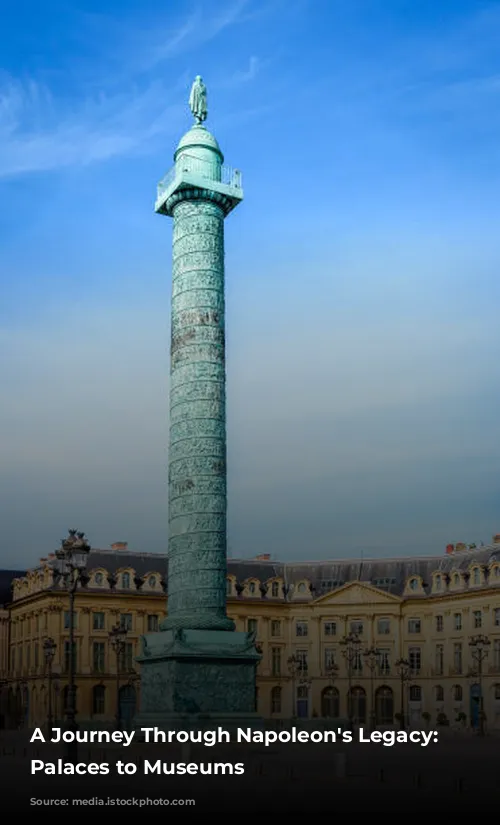
Napoleon’s Influence on the Artistic Landscape
Napoleon’s presence transcended the political and military sphere, leaving an undeniable impact on the artistic landscape of France. Before housing the iconic Mona Lisa, the Louvre was known as the Napoleon Museum, dedicated to artistic treasures seized during the Emperor’s military campaigns.
Napoleon’s Egypt campaign and his coronation at Notre-Dame Cathedral inspired many artists of his era, most notably the painter David. His monumental painting “The Coronation of Napoleon,” one of the Louvre’s most famous works, captures the grandeur and power of the Emperor’s reign.

A Lasting Legacy Under the Golden Cupola
After a life spent amidst the opulence and grandeur of the Empire, Napoleon now rests beneath the celestial vault of the Dôme des Invalides. His tomb, a testament to his grandiose ambitions, is monumental in scale, surrounded by mosaics representing his political achievements and military triumphs.
Napoleon’s legacy, a tapestry woven from his triumphs and failures, continues to fascinate and captivate us today. From his regal residences to the enduring symbol of the Legion d’Honneur, Napoleon’s influence remains etched in the cultural landscape of France, a testament to the man who dared to shape history and leave an enduring mark on the world.
